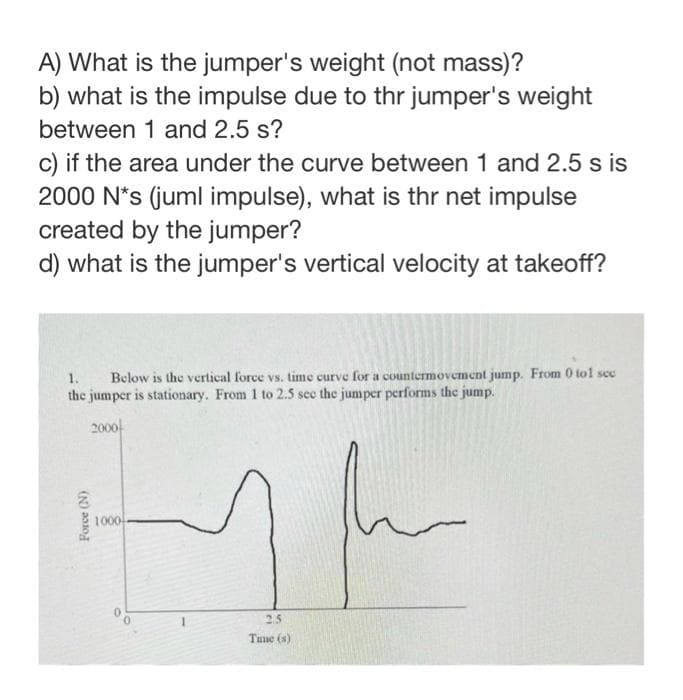A) What is the jumper's weight (not mass)? b) what is the impulse due to thr jumper's weight between 1 and 2.5 s? c) if the area under the curve between 1 and 2.5 s is 2000 N*s (juml impulse), what is thr net impulse created by the jumper? d) what is the jumper's vertical velocity at takeoff? 1. Below is the vertical force vs. time curve for a countermovement jump. From 0 tol sec the jumper is stationary. From 1 to 2.5 see the jumper performs the jump. 2000 Force (N) D 1000 1 h 25 Time (s)
A) What is the jumper's weight (not mass)? b) what is the impulse due to thr jumper's weight between 1 and 2.5 s? c) if the area under the curve between 1 and 2.5 s is 2000 N*s (juml impulse), what is thr net impulse created by the jumper? d) what is the jumper's vertical velocity at takeoff? 1. Below is the vertical force vs. time curve for a countermovement jump. From 0 tol sec the jumper is stationary. From 1 to 2.5 see the jumper performs the jump. 2000 Force (N) D 1000 1 h 25 Time (s)
Related questions
Question
PLease answerall parts with in 30 mins ! i will upvote !

Transcribed Image Text:A) What is the jumper's weight (not mass)?
b) what is the impulse due to thr jumper's weight
between 1 and 2.5 s?
c) if the area under the curve between 1 and 2.5 s is
2000 N*s (juml impulse), what is thr net impulse
created by the jumper?
d) what is the jumper's vertical velocity at takeoff?
1.
Below is the vertical force vs. time curve for a countermovement jump. From 0 tol sec
the jumper is stationary. From 1 to 2.5 see the jumper performs the jump.
2000
Force (N)
1000
1h
2.5
Time (s)
Expert Solution
This question has been solved!
Explore an expertly crafted, step-by-step solution for a thorough understanding of key concepts.
Step by step
Solved in 2 steps with 2 images
